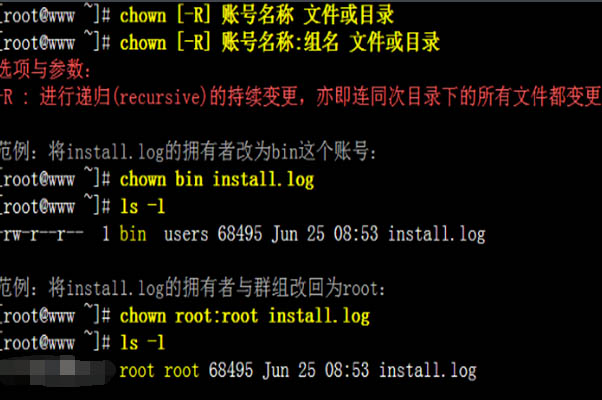
projects to do permission management and does not require root deployment startup and other operations.
Then, create an ordinary user and move the project under the ordinary user.
Command: useradd name
Command : passwd name

Method 1:
Go to the home directory to see if there is the name user just added
Command: cd /home/
Method 2:
Directly test whether you can switch to the name user
Command: su name
(You don’t need to enter a password from root to an ordinary user)
and want to return to the root user, directly: exit
"chown -R" in Linux means: set the same owner for all directories and subdirectories in the current directory change.
Linux/Unix is a multi-user and multi-tasking operating system, and each file has its owner (Owner). Use the chown command to change the owner of a file.
Generally speaking, this command can only be used by the system administrator (root). Generally, users do not have the permission to change the owner of other people's files, nor do they have the permission to change the owner of their own files. other people. Only the system administrator (root) has such permissions.
The complete usage of the chown command: chown [OPTION]... [OWNER][:[GROUP]] FILE...
Among them, the -R parameter refers to the current directory Make the same owner change to all files and subdirectories (i.e., recursively change one by one).

List of all parameters of the chown command:
1, -c: If the file owner has indeed changed, Only display the change action
2, -f: If the file owner cannot be changed, do not display the error message
3, -h: Only the link (link) is changed, and Files that are not actually pointed to by the link
4. -v: Display details of owner changes
5. -R: Same ownership of all files and subdirectories in the current directory or changes (that is, changing one by one in a recursive manner)
6, --help: Display auxiliary instructions
7, --version: Display version
The above is the detailed content of How to create a normal user and change user groups in Linux system. For more information, please follow other related articles on the PHP Chinese website!




